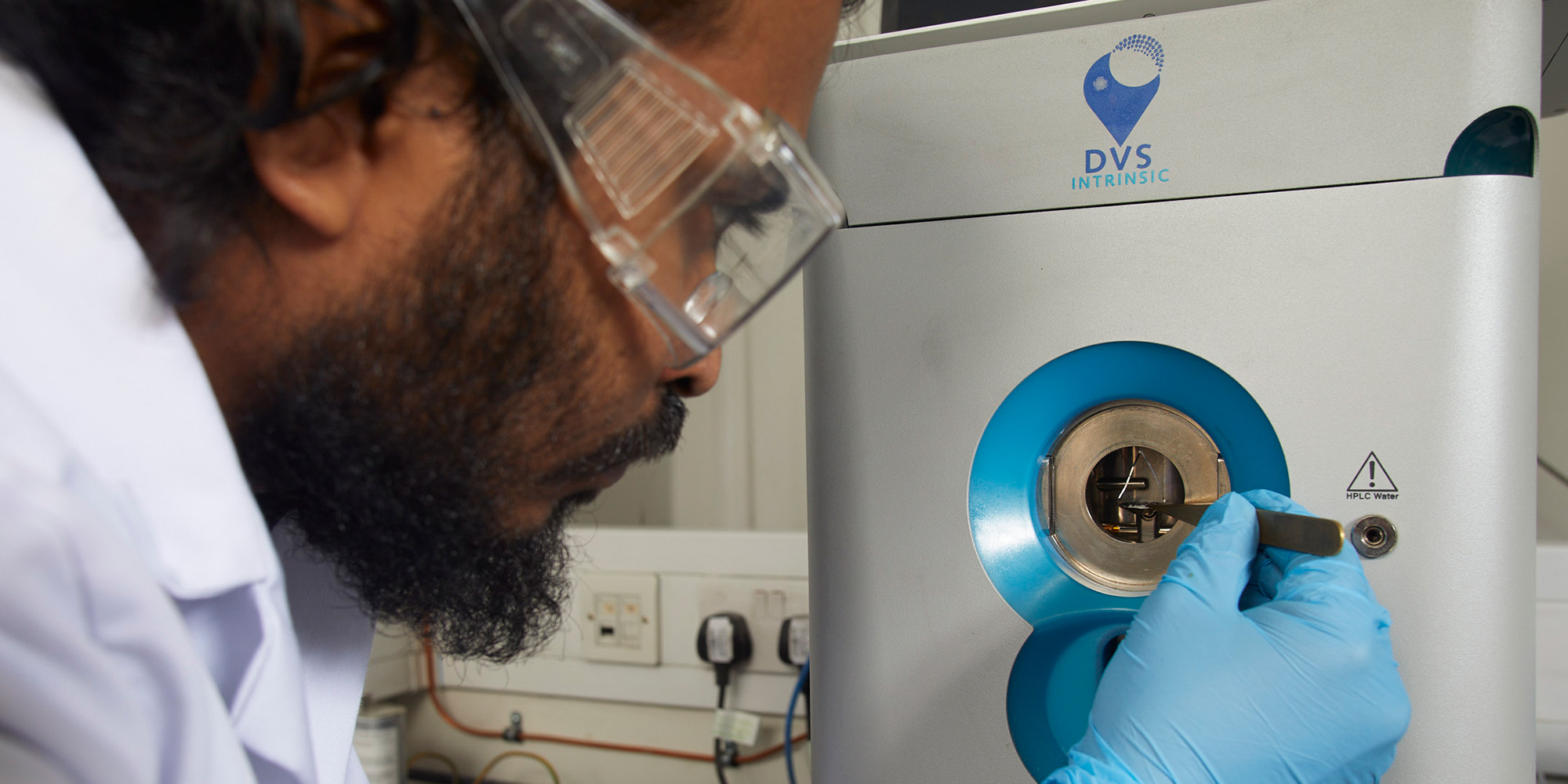Determining the baseline characteristics for a material and any subsequent changes imposed by processes or handling operations is critically important for plant optimisation.
In order to deliver this type of analysis, The Wolfson Centre for Bulk Solids Handling Technology makes use of a blend of standard test equipment types and a large number of in-house test apparatus that puts our group at the cutting edge for these technologies.
Discuss your project requirements with one of our experts – we'll be happy to offer guidance on the most appropriate measurements for your needs.
Characterisation techniques unique to the Wolfson Centre which can be applied for particle sizes ranging from a few microns up to 25mm:
- Determination of flow properties (using shear cell testers) for materials over a range of variables, such as particle size, moisture content, temperature and time consolidation effects. Video of PFT in use
- Comparison of wall friction against different types of wall materials (i.e. Hardox 400, carbon steel 43, Stainless steel 316/304#2B, UHMW-PE, applied finishes, etc.)
- Evaluation of segregability for bulk materials when subjected to either air effect or surface effect mechanisms of de-blending . Video of Segregation Tester in use.
- Measurement of the attrition behaviour of bulk materials when subjected to impact damage (i.e. within chutes or pneumatic systems) or crushing/shear induced damage (i.e. within storage systems or during mechanical handling)
- Evaluation of impact erosion resistance of wall materials (i.e. simulating pneumatic conveying pipelines / transfer chutes) or erosivity of a given bulk solid
- Determination of dust extinction moisture content (DEM) for bulk materials.
- Evaluation of propensity for lump/cake formation for bulk materials under simulated storage conditions.
Alongside these bulk characteristics, more traditional data can also be provided:
- Particle density (i.e. gas comparison pycnometer)
- Particle size distributions (i.e. conventional and air swept sieves, or laser diffraction methods in wet or dry dispersion)
- Particle shape (i.e. Malvern Morphologi G3)
- BET (using Krypton gas)
- XRD/XRF
- Scanning Electron Microscope (SEM) imaging
- Moisture sorption isotherms (DVS)
Aside from the characterisation of bulk materials for the purposes of bench-marking, a core activity of The Wolfson Centre is that of equipment design. This type of project can range from providing geometrical guidelines for complete replacement to modification of existing plant. Typical design outputs can include:
- Full scale pneumatic conveying trials to determine safe minimum velocities when operating in lean or dense phase and optimisation of existing plant systems hardware for increased throughput or improved energy efficiency.
- Determination of critical outlet size to support mass flow discharge or reliable core flow operation (i.e. diameter greater than the 'rat hole' dimension for a given bulk solid).
- Recommendations for hopper half angles to support mass flow (for a given wall material / surface finish) or determination of angles for self-draining core flow equipment.
- Design of inserts to modify flow patterns.
- Calculations of chute angle for blockage free operation.
- Design of interfaces to various feeder types to support mass flow or for maximisation of flow channel area in core flow.
- Measurement of 'slip-stick' flow behaviour (i.e. silo quaking, 'honking' silos) and determination of counter measures.
- Forensic reports for silo or equipment failures relating to bulk solids.
- Evaluation of dry filter media for pressure drop progression, particle break though and 'clean-ability'.
- Bench marking of performance characteristics for different aerated panel media (i.e. for energy efficient operation).
